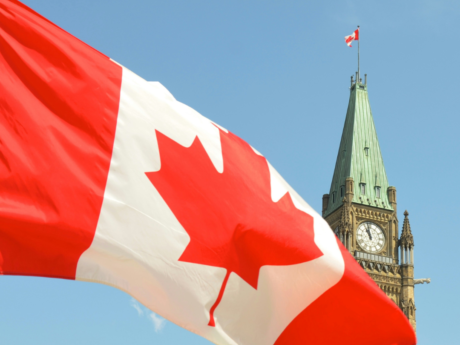How tariffs impact Canadians—and how to prepare if you’re facing debt

Since US President Donald Trump took office in January 2025, tariffs and their impact on Canada’s economy have dominated the headlines. Within his first month, Trump’s administration announced plans to impose a 25% tariff on all Canadian goods entering the US, except for energy products which would face a 10% tariff. After a couple false starts and retaliatory measures introduced from Canada’s federal and provincial governments, the US paused tariffs until April 2, 2025—with the exception of tariffs on steel and aluminum, which were implemented on March 12, 2025.
Tariffs can create uncertainty, disrupt industries, and put added strain on an already fragile economy. For Canadians struggling with debt, the ripple effects can make an already difficult situation feel even more overwhelming. If you’re worried about how these economic changes might impact your financial future, you’re not alone. Understanding the bigger picture is the first step, and if you need support managing your debt, we’re here to help.
What are tariffs and how will they impact your finances?
Tariffs are essentially taxes imposed on imported goods, making those products more expensive. When the Canadian government places tariffs on foreign goods—or when other countries impose tariffs on Canadian exports—it can have a ripple effect on the economy. Businesses often pass increased costs onto consumers, leading to higher prices on items like groceries, electronics, and household essentials.
For Canadians already facing financial strain, rising costs due to tariffs can make it even harder to manage debt, save money, and cover basic living expenses.
How tariffs affect the cost of living
Tariffs can drive up prices in several ways:
- Higher costs for imported goods: If Canada imposes tariffs on products from countries like the US, the cost of imported items rises, leading to higher prices at the checkout.
- Increased business expenses: Companies that rely on materials and goods from the US may pay more to import them, passing those costs to customers.
- Job market uncertainty: If tariffs slow trade, industries that depend on exports—such as manufacturing, agriculture, and energy—could see job losses or wage stagnation.
For Canadians already struggling with debt, even a slight increase in costs can have serious consequences.
How to prepare your finances
If you’re carrying debt and worried about rising costs, taking proactive steps can help you stay ahead:
- Review and adjust your budget
It’s important to be proactive with your budget now so you can be more prepared for changes that might affect your finances. Start by reassessing your spending and identify areas where you can cut back. Focus on essentials, reduce non-essential spending, and look for ways to stretch your budget.
- Prioritize high-interest debt
Tackling high-interest debt (like credit cards) first can help you save money on interest payments. Consider consolidating debt to secure a lower interest rate.,
- Build an emergency fund
If there’s room in your budget, build an emergency fund to cushion against unexpected expenses caused by inflation and economic shifts. Even small contributions can add up over time.
- Look for cost-saving alternatives
With prices rising, consider generic brands, second-hand shopping, and bulk purchases to reduce costs. Also, look for local alternatives to imported goods. There are lots of products made right here in Canada!
- Talk to a Licensed Insolvency Trustee
If you’re struggling with debt, a free consultation with one of our experienced Licensed Insolvency Trustees can help you find the best solution to manage your debt.
Tariffs may be beyond our control, but how we respond to economic shifts isn’t. By making smart financial decisions now, Canadians facing debt can better prepare for the rising costs that tariffs may bring. Book your consultation today.
Take the first step to debt freedom
Speak to one of our debt solutions professionals during a free, no-obligation consultation.
Related articles

What Canada’s 2025 federal budget could mean for your taxes—and your wallet

4 common investment scams and how to avoid them

Is AI your new best budget buddy?

Should I get a store credit card?

5 questions to help you plan a debt-free wedding

The rising cost of friendship in Canada

What happens if your employer goes bankrupt?
Looking for assurance, tax, and business advisory services? Visit Doane Grant Thornton LLP.

Loading